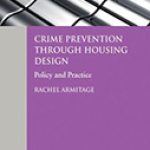Corporate Manslaughter and Regulatory Reform

Author: Paul Almond
Publisher: New York: Palgrave Macmillan, 2013. 224p.
Reviewer: Elyshia Aseltine | May 2014
Almond seeks to “explain and better understand contemporary trends towards the use of criminal law as a means for holding corporate bodies accountable for work-related deaths” (pg. 4). This book offers an important contribution given the increasing dominance of corporations, especially multinational ones, in political, social, and economic spheres. While his analysis concentrates on the United Kingdom, the United States, and to a lesser degree, Australia, Almond’s consideration of corporate culpability is truly international.
Corporate manslaughter deaths emerge from “safety incidents that occur as the result of the actions of a corporation, business, or other organizational entity” (pg 10). These deaths can be of employees or members of the public. Contributing factors to corporate homicide include lack of oversight; insufficient maintenance of, or investment in, safety precautions; and, poor training on, or enforcement of, safety policies. Work-related deaths are an important social problem as they have significant economic and social consequences both for those who are directly affected (i.e., workers, their families, and their communities) and for society more broadly. Those most at risk for work-related death are those who are already economically and socially vulnerable, including temporary workers (e.g., migrant or contract workers), low-paid workers, and workers who toil at the edges or outside of the formal workplace (e.g., those working in black market economies).
While corporations have a long history, explicit efforts aimed at holding “corporations that kill” accountable are relatively new. Beginning in the 19th century, most of the efforts to establish corporate accountability have focused on regulatory rather than prosecutorial mechanisms. It is only in the last twenty years that some jurisdictions have turned to criminal law as a means for holding corporations accountable. In the United Kingdom, the first successful case of prosecution of corporate manslaughter occurred in 1994. The case involved a small company—with a few employees and one administrator—that was responsible for the drowning deaths of several school children.
Approaches to corporate culpability exist along a continuum. On one end are countries that have not created policies establishing corporate criminal liability; these include Germany, Greece, the Czech Republic, Mexico, and Argentina. On the other end of the continuum, are countries (or regions) that have established corporate manslaughter as a new criminal offense; this list includes the United Kingdom (Corporate Manslaughter and Corporate Homicide Act of2007) and the Australian Capital Territory (Industrial Manslaughter Act of 2003). Most countries lie in the middle of the continuum. A number of countries have made efforts to expand or reinterpret current criminal legislation in ways that make it applicable to corporations, including the US, Canada, (the rest of) Australia, South Africa, New Zealand, and much of Europe. The following countries have enacted corporate liability statutes but refrain from extending liability to manslaughter cases: Brazil, Portugal, Israel, and much of Asia. Statutes in these regions generally limit corporate liability to environmental or financial crimes, including corruption and bribery. Almond suggests that the adoption of such policies is due not only to pressure from international bodies such as the European Union and the United Nations, but also to an instrumental need—the need to establish rules for an international marketplace.
The first (and, as of the date of Almond’s publication, only) application of the UK’s corporate manslaughter law was in 2008. In this case, a geotechnical engineer was asphyxiated after falling into an improperly fortified mud ditch. The company, Cotswold Geotechnical Holdings, was convicted of corporate manslaughter in 2011. Though this case is an example of successful prosecution, legal enforcement continues to be a rare response to corporate criminality. Instead, regulation continues to be the most frequent form that the enforcement of corporate accountability takes. This fact contributes, in part, to Almond’s conclusion that corporate culpability laws are largely symbolic. These laws are not intended to be used to systematically punish and deter corporate wrongdoing, but rather to address normative deficits that exist within existing corporate regulatory regimes.
In contrast to criminal law, regulation emphasizes maintaining goodwill between the regulators (usually the state) and the regulated (the corporations). Regulatory regimes tend to emphasize cooperative compliance-seeking processes and to give credence to the protection of the reputation of corporate entities. Additionally, under regulation, corporate accountability is viewed as a progressive process rather than an endpoint. As such, regulatory regimes tend to focus on changing behaviors that will result in measurable safety improvements (e.g., accidents, injuries, deaths) or in fostering a better functioning market. With the focus on better outcomes, the moral underpinnings of corporate regulation are obscured or forgotten. Finally, regulation is future focused; it emphasizes the prevention of accidents from happening in the future. While criminal punishment also seeks to prevent future happenings (specifically through deterrence—making the potential negative consequences for inappropriate acts severe enough to change current behavior), criminal punishment also meets a moral, retributive need—the need to recognize that punishment is morally deserved.
To situate the normative components of criminal law, Almond relies on the theory of Jürgen Habermas. Criminal law must have communicative power—it must express normative values in order to be regarded as legitimate by the populace. The development of corporate manslaughter legislation is borne out of a desire to establish the communicative power of corporate oversight that has not been fully realized by regulatory regimes, as such regimes are largely devoid of the moral judgments considered necessary for meeting the normative needs of the population.
According to Almond, position on the continuum discussed above can be explained in part by considerations such as the strength of union membership and worker safety movements as well as national commitment to neoliberal economic policies. Those countries where neoliberal economic policies receive the highest degree of political support (and where union strength tends to be weakest) appear to be the countries where corporate manslaughter statutes have made the most progress. Again, Almond turns to Habermas to explain this. According to Habermas, the lifeworld (i.e., “the everyday mutual understandings, values, and interactions that form the basis of informal social relations”(pg 81) is being overtaken by the system (i.e., the functional and strategic components of society that allow for patterned, complex political and economic activities to occur, almost as if on auto-pilot). In such a setting, criminal law becomes a means to curtail system domination (assuming, of course, that the law emerges from deliberative discourse rather than system-defined needs). In neoliberal marketplaces, regulation is better suited for meeting system needs than lifeworld needs; the establishment of corporate manslaughter offenses may work as a means of reemphasizing important lifeworld needs.
There are a number of challenges associated with using criminal law to address corporate misbehavior. First, it requires the significant investment of political and economic resources. Prosecution of corporate entities is time-consuming, intensive, and expensive and corporations have significant political clout. Second, there are legal and definitional challenges. While corporations are recognized as individual legal entities, they are not considered individuals in the sense that they can express intention or state of mind—such expressions are considered vital in manslaughter offenses. While prosecutors have been successful in establishing intentionality in very small corporations with few administrators, it is less clear how one demonstrates the intentionality of a legal entity that possesses a complex hierarchy and employs hundreds or thousands of employees. This debate is yet unresolved, even in jurisdictions that allow for corporate manslaughter culpability. Some jurisdictions continue to require the identification of culpable senior corporate administrators while others allow for broader considerations of corporate culture (e.g., pervasive problems in management that go beyond particular individuals.) Third, beyond specific disaster incidents, work-related deaths may be difficult to demonstrate. Injuries sustained or illnesses contracted during employment may result in death sometime later. In such cases, it may difficult to directly connect corporate misbehavior with work-related deaths.
A final challenge may be with the public support of corporate criminal culpability statutes. Coverage in the media of corporate wrongdoing is rare, and when corporate regulation is addressed the rhetoric often works to reinforce the “regulatory myth” that corporate regulation is unnecessary and burdensome “red tape.” As such, many members of the public only engage with such issues temporarily and superficially. Less sophisticated public opinion studies suggest that there is little public support for corporate regulation and that it is viewed as a bureaucratic hindrance. More sophisticated public opinion research challenges these conclusions. When public lack of information is countered by providing information (in the form of vignettes, for example) and then asking people to assess culpability, appropriate punishments, etc., members of the public are supportive of corporate “regulation.”
The theoretical and legal complexity of Almond’s text would make it a difficult one to use in an undergraduate setting, but it would be appropriate for graduate level courses on law, corporate crime, international (or comparative) law or criminal justice. Sections of the text may also be appropriate to consider for a graduate course on the sociology of law.


